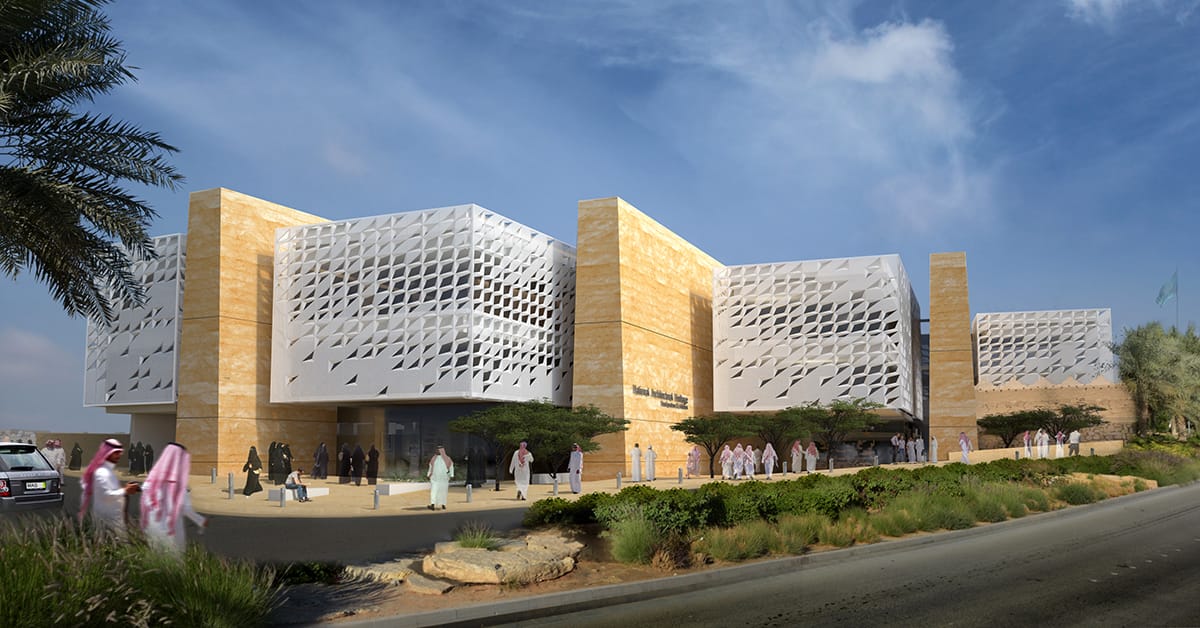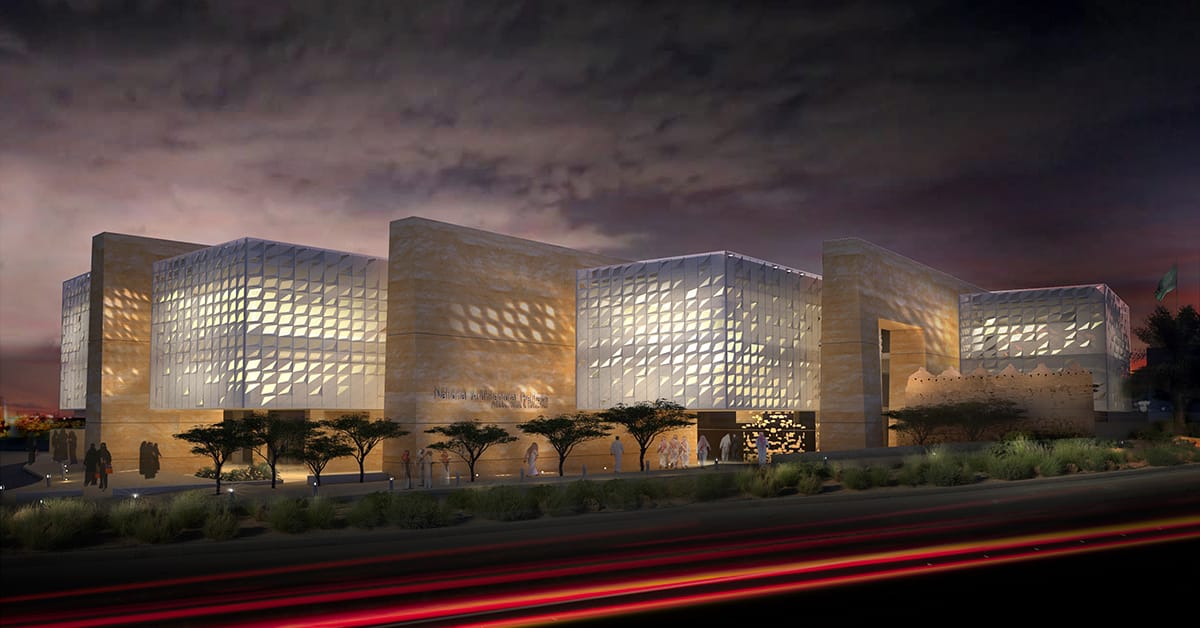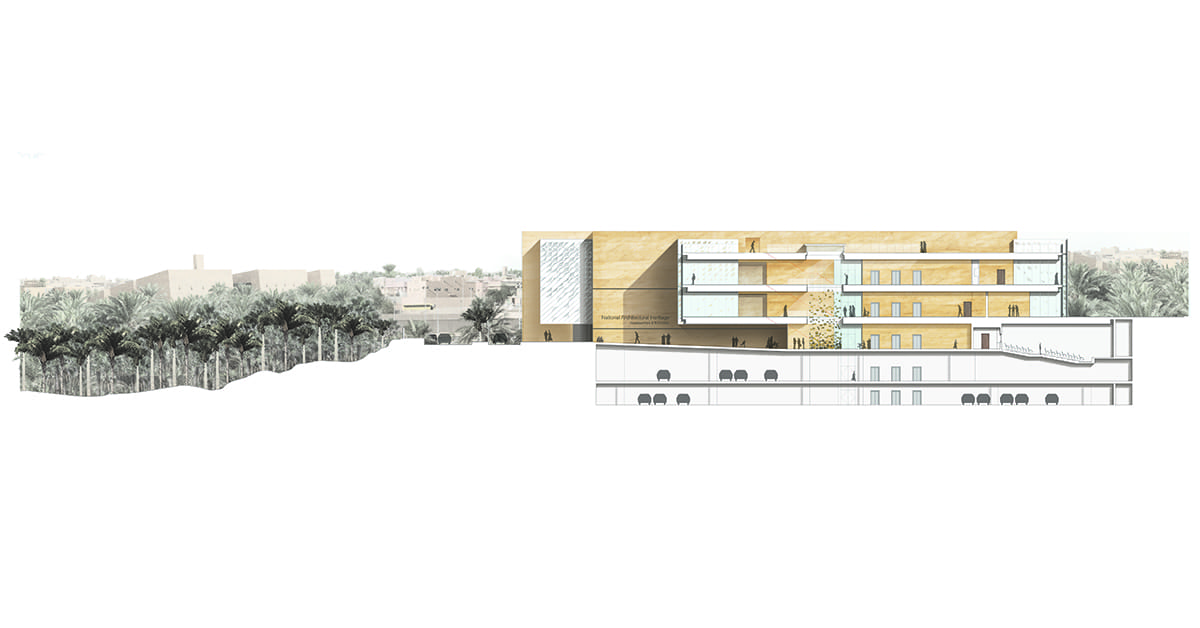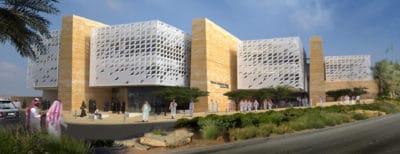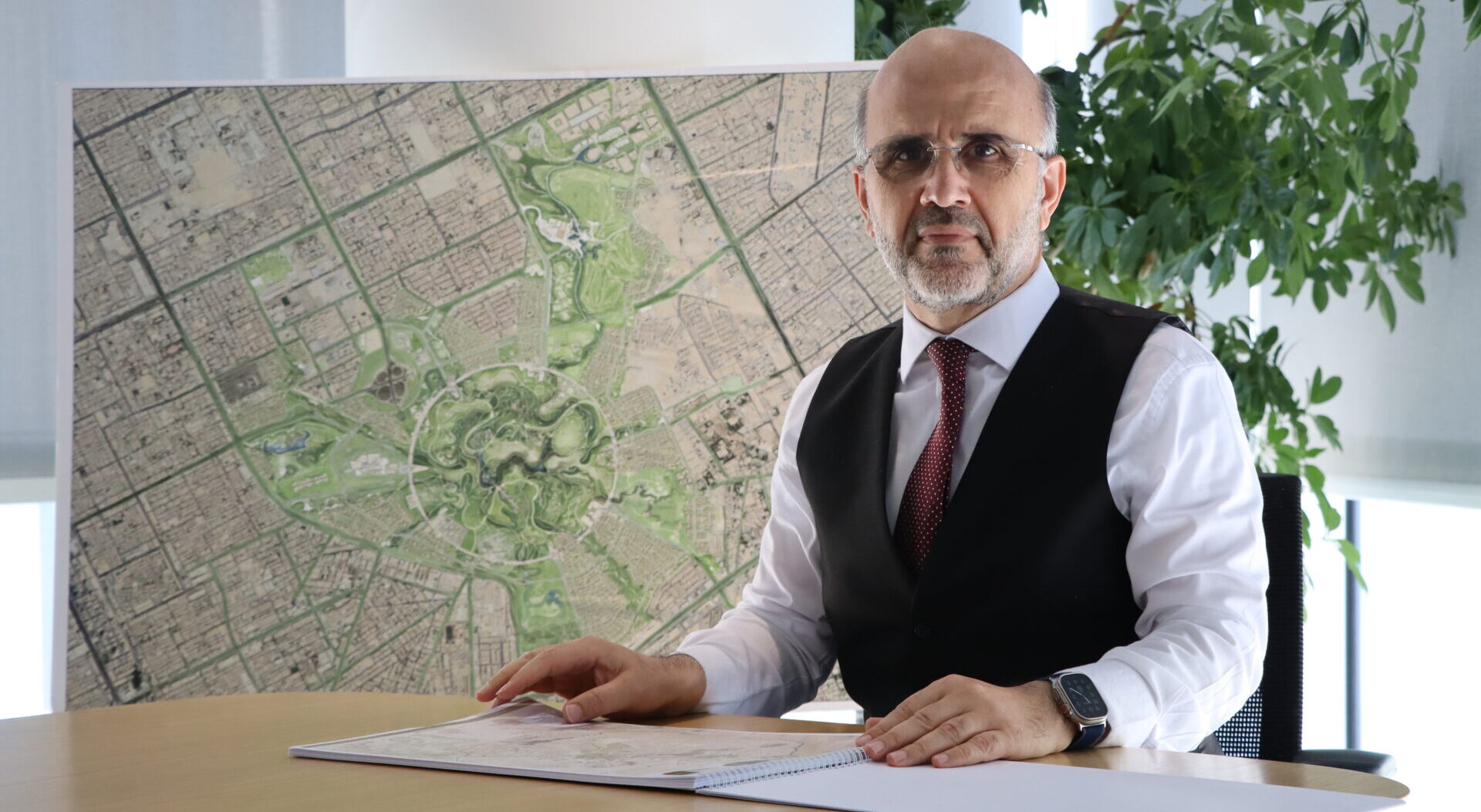 Omrania, National Architectural Heritage Museum, Diriyah, KSA. Image © Omrania
Omrania, National Architectural Heritage Museum, Diriyah, KSA. Image © Omrania .
Omrania’s proposed design for the National Architectural Heritage Museum reflects our belief in the importance of learning from the past to design for the future.
We are dedicated to creating architecture that is both innovative and contextual. This is particularly important when building in Saudi Arabia, where we strive to design in a contemporary vernacular that carries forward the Kingdom’s architectural traditions without reproducing historic forms or relying upon foreign models. Few projects better reflect this aspiration than our proposal for the National Architecture Heritage Museum.
Inspired by the nearby ruins of Diriyah, whose mud walls feel like they grew directly from the ground, Omrania’s proposal is organized around a series of heavy, rammed-earth walls. These walls are not only a modern, durable interpretation of Diriyah’s architecture; they also serve a practical purpose, housing almost all required service and circulation spaces for the building. This strategy leaves the floor areas between the walls open, creating flexible space to accommodate the building’s complex program. Between these walls, a rhythmic series of glass “light boxes” contain the primary elements of the building program, with a clear delineation between public and private areas.
Related: Sustainable Materials — Building With Earth And Stone
The building’s general form and orientation responds directly to the physical and historical context in three major ways: by reinforcing the pedestrian movement along the street-side plazas, and by providing views over the wadi toward Diriyah, and by incorporating a reconstructed fortification wall as a focal point and organizing feature. The wall provides a link between traditional and contemporary construction methods, honoring the history of the site and reflecting our belief in the importance of place and memory in architecture.
Omrania’s proposal for the National Architecture Heritage Museum is distinctly contemporary, yet clearly influenced by the Kingdom’s architectural traditions. Bridging the past and the present, the building embodies the essential architectural knowledge it contains. It aims to serve as a pedagogical tool educating the public about historic architecture and preservation — and also to inspire the next generation of designers and engineers to thoughtfully apply those lessons.








